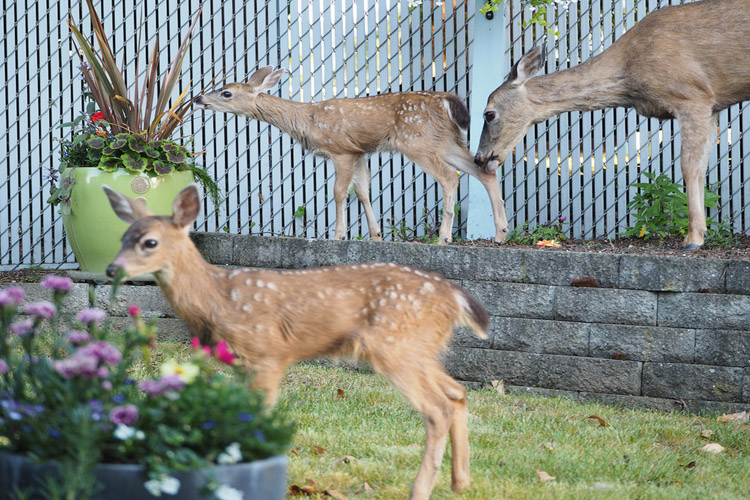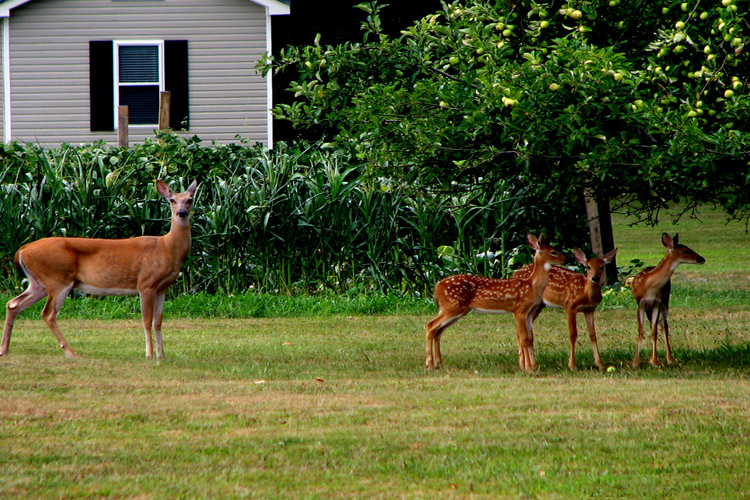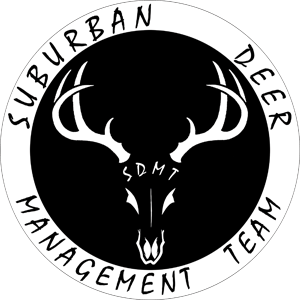Deer Management Services
Deer Management Facts
The idea of wildlife management is relatively recent and works on both sides of the fence to regulate animal populations. In many parts of Pennsylvania and surrounding states, hunters are limited to the number of deer able to be harvested due to decades of over hunting, harsh winters and native predators; leaving populations diminished. Management groups work hard to create and enforce regulations to ensure a heathy sustained wildlife population is around for generations to come. On the other hand suburban areas have much less hunting accessibility and little to no natural predators to keep wildlife populations in check. This in turn leaves areas over populated requiring deer and other wildlife to fend for themselves over long winter periods with little food for the number of animals per dwindling acre. With property lines shrinking and wildlife numbers increasing we are presented with many issues.
The leading deer / human interaction and concern of public safety is the overwhelming number of deer related car crashes in developing suburban areas. A study released by leading insurance corporation State Farm reports that between July 1, 2011 and June 30, 2012 an estimated 1.2 million deer-vehicle crashes occurred resulting in over 200 human deaths and $4 billion dollars in damages. In the last 7 years 60 deaths and over 4,400 injuries have resulted in such accidents in the state of Pennsylvania alone. And in 2014, deer related car accidents put the keystone state third highest in the nation at 124,000 crashes, up almost 8% from 2013.


Professional Deer Management
Separate from public hunters but still abiding by the same laws and regulations, wildlife management groups have formed to identify and support wildlife regulation needs. When approaching a potential management area, management groups such as Suburban Deer Management Team, will conduct studies to determine the amount of wildlife on a specific property as well as the potential of run over from surrounding areas. Many factors come into consideration. Property bordering major roadways, residential developments, farms & forests and their population of existing wildlife, as well as potential effects of overpopulation are studied. Safe boundary lines are set and an estimated percentage of reduction is determined to maintain a healthy balance between wildlife and the resources to sustain them. Team members then determine the most utilized traffic routes and times of frequency. After identifying the surrounding areas and determining the best approach, herds can be effectively reduced.
Why Deer Management is a bit misunderstood
In recent years, many methods of wildlife management have gained much negative attention. A common misconception is grouping wildlife management and trophy hunting into the same crowd. From wild game animals being left to rot after valuable organs are harvested, to high price tag poachers bagging wildcats in Africa. These and many more acts can shed bad light on hunting as a whole, though the truth behind the bad press is much different then what the public has been lead to believe.
Animal rights activists play a crucial role in today's awareness in the mistreatment of animals. Many cruelties have been discovered and are starting to be addressed in the meat processing industry. Such groups are absolutely critical to the regulation in treatment of mass livestock in the processing market. Unfortunately, as valuable of a role that animal right groups play in these areas they also present an absolute one sided argument in the area of wildlife management.
The biggest misunderstanding is behind the intention of hunters and wildlife management groups. Commonly accused of destroying resources which they in fact work so hard to preserve. Hunting advocacy groups and game commissions represent the largest collective support and provide more funding in protection and preservation of the natural resources then all activist groups combined. Each year, nearly $200 million in hunting license, tag and stamp proceeds are distributed to State agencies to support wildlife management programs. Public and private groups purchase tens of thousands of acres to provide habitat for endangered wildlife in over populated areas throughout the nation. These efforts and many more represent a large number of people striving to preserve the natural habitat for generations to come.




